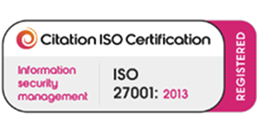The Real Cost of Downtime and How to Avoid It
It starts the same way for many businesses: the phones go quiet, the orders stop coming in, your team can’t log in. At first, you think it’s a local glitch. But soon you discover your website or app is down – and has been for hours. Every passing minute is costing money, frustrating customers, and eroding the trust you’ve worked hard to build.
Downtime is more than an inconvenience
In many industries, it’s an emergency. For an e-commerce store, it’s lost sales. For a recruitment platform, it’s missed opportunities. For a SaaS product, it’s a service failure that could push customers to competitors. And even when the system comes back, the ripple effects can last weeks or months.
The hidden costs of an outage:
- Lost revenue: Direct sales that can’t be made during the outage are gone for good.
- Brand damage: Users remember bad experiences far longer than good ones.
- Productivity drain: Your team sits idle or spend hours firefighting instead of being productive.
- Customer churn: Many users won’t give you a second chance.
- SEO penalties: Extended downtime can hurt search engine rankings.
Why outages happen
Hardware failures, software bugs, cyber-attacks, power cuts, or even network provider issues can all bring a site down. And if your hosting platform isn’t designed with redundancy and rapid failover, you’re at the mercy of repair times and vendor response queues.
Building resilience into your hosting
The good news is that many outages are preventable with the right infrastructure. At Strategies, we design for failure from the start:
- Multiple redundant servers so a failure doesn’t stop service.
- RAID arrays with mirrored disks to protect data storage.
- Dual power supplies and diverse network routes to remove single points of failure.
- 24/7 monitoring so issues are spotted and fixed before they escalate.
It’s not just about technology, it’s about processes and people. Our engineers are local and have rapid, full access to the secure UK data centre where our systems are hosted, giving us direct access to our infrastructure. If a hardware swap is needed, we can act immediately – no waiting in vendor queues, no delays while third-party contractors travel in. That proximity also means we can perform regular hands-on checks, apply fixes before they become incidents, and physically verify that everything is running as it should. It’s a level of control and responsiveness you simply don’t get when your hosting is managed from afar.
Planning for the worst
Even the best systems can face unexpected events. That’s where disaster recovery (DR) comes in. DR goes beyond backups by maintaining a ready-to-run environment at a second UK site. Key ideas:
- Backups vs DR: Backups let you restore data; DR aims to restore service by switching to a pre-prepared environment.
- Replication: Critical systems are replicated between sites so a recent, consistent copy is available if failover is required.
- Runbooks & testing: Documented procedures and regular test failovers reduce uncertainty and speed up recovery.
- Failover steps (typical):
- Confirm incident & invoke plan
- Switch traffic to the secondary site (including DNS updates where required)
- Verify services and data integrity
- Communicate status to stakeholders
- Plan failback when primary is stable.
The goal is simple: reduce recovery time and data loss to acceptable levels for your business, and make the recovery process predictable. With the right preparation, recovery can be measured in minutes rather than days, subject to solution scope and complexity.
Downtime prevention checklist
If you’re assessing a hosting provider, ask them:
- Do you have redundant hardware, power, and network connections?
- How quickly can you fail over to backup systems?
- Is your support team on-site with the servers?
- What’s your actual uptime record over the past year?
- Do you offer disaster recovery that’s tested regularly?
Choosing the right host isn’t about chasing the lowest price, it’s about finding the right partner for your organisation.
Downtime is costly, not only in terms of lost productivity but also in missed opportunities, disrupted services, and the impact on your reputation. In most cases, the cost of prevention is far lower than the cost of recovery. That’s why having a highly knowledgeable, UK-based team who understand your systems, priorities, and challenges is so valuable. We don’t just provide hosting, we partner with you to keep your infrastructure resilient, secure, and ready for whatever comes next.
Talk to us about building an uptime strategy for your business: https://www.strategies.co.uk/hosting/












